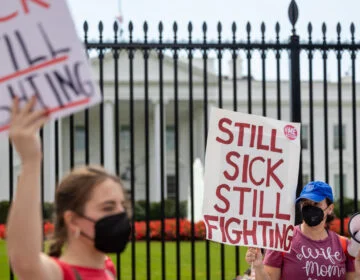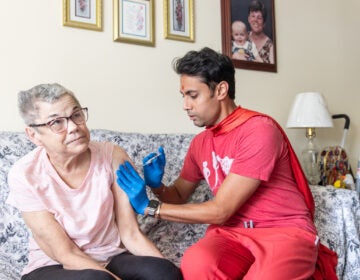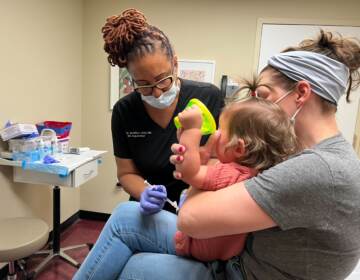Why are we so confused about what’s safe? How did the message get so muddled?
When Pa. ordered a coronavirus shutdown in March, things were clear: Stay home. Four months later, localized rules make safety seem open to interpretation.
Listen 3:52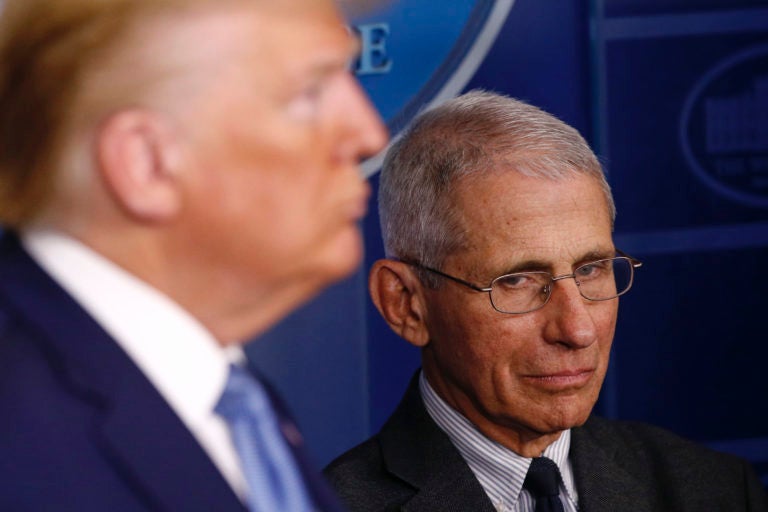
Director of the National Institute of Allergy and Infectious Diseases Dr. Anthony Fauci, right, and President Donald Trump listen as Vice President Mike Pence speaks during a coronavirus task force briefing at the White House, Saturday, March 21, 2020, in Washington. (AP Photo/Patrick Semansky)
Are you on the front lines of the coronavirus? Help us report on the pandemic.
When Marquita Burnett heard Philadelphia was moving to the “green” phase of reopening, she was confused. First of all, she was pretty sure the city had already earned the green label from Pennsylvania’s governor (it had). The next thing she knew, the city was scaling back some of the businesses it had planned to reopen (namely, indoor dining and gyms). But it was still calling this phase “restricted green.”
“I feel like it’s been back and forth – the mayor says one thing, the governor says another. So who do you really listen to?” asked Burnett, a 32-year-old teacher’s assistant.
Looking for something to do with her 6-year-old son, she saw the mayor announce that libraries could open in the new, modified green phase. But people who worked at the library were posting on Twitter that they were not open.
“The lines are very blurred,” said Burnett. “Are we completely in the green, or not?”
When the coronavirus shutdown was ordered in March, the message was clear and simple: Stay at home; don’t leave the house except to perform essential work, or shop at essential businesses. Say what you will about how hard those directions were to stomach, you can’t argue they were unclear.
Skip ahead four months. As businesses have slowly started to reopen and virus case counts slid below their peak — and inched back up again — mixed messages on every level of government have made what’s permissible and safe feel like a matter of interpretation.
Absent any overarching or consistent national messaging, elected officials are left to come up with localized rules, which at times contradict one another, presenting a false choice between personal freedoms and protecting one’s health. All that forces individuals to make more decisions, with heavier moral implications, than we’re generally equipped to handle.
When ‘green’ means ‘stop’
The color-coded, phased reopening was developed by Pennsylvania to gauge two indicators: the amount of virus circulating in the community, and also the degree to which the economy was open.
“In the beginning, we had a plan where there was pretty tight linkage between level of viral transmission and reopening activities,” said Susan Coffin, a pediatric infectious disease specialist who is working on Children’s Hospital of Philadelphia’s response to the pandemic. Over time, she said, though the color-coding system remained a good indicator for which businesses were opening up, it stopped reflecting the viral risk as closely as the number of new cases ebbed and flowed. And that, she said, has resulted in confusion.
“Now, we are seeing what might sound like a contradictory message: Yes, we are reopening, but, no, we don’t want you to stop behaving as though there is virus in our community.”
In neighboring New Jersey, by contrast, the phased reopening is incremental. Each phase offers a broad sense of what will change, and, industry by industry, individual restrictions are loosened one at a time.
For his part, Philadelphia Health Commissioner Thomas Farley said he wished people could ignore the color coding altogether.
“The governor came up with this high-level plan with these three different colors, but clearly Philadelphia is unique,” Farley told reporters at a press conference at which he announced the city would pause before entering the full green phase. “So we’re calling it green, but I would rather have people focus less on the color and more on what activities are allowed and not allowed.”
Part of the issue is that the science is evolving and what we know about the novel coronavirus changes each day. Masks, for example, were initially explicitly discouraged because of short supply. Once they became more available, and research emerged demonstrating asymptomatic spread of the airborne virus, masks were back in full force.
The messaging around asymptomatic spread also lagged behind the research confirming its existence. “Stay home if you’re sick” doesn’t help contain the virus if you can infect people without knowing you’re ill.
Though health departments do their best to keep up with the research as it emerges — and to explain why their recommendations change, when they do — it can be hard to keep track of. And it doesn’t help when politicians don’t follow orders.
“We can’t be out there as the secretary of health [is] telling you to wear a mask and your local elected official is telling you, ‘Don’t wear a mask, you’ll be fine, they’re making it up,’” said April Hutcheson, communications director for Pennsylvania Department of Health. “It makes the job more challenging.”
But there is some messaging health departments can control. Pennsylvania laid out what many interpreted as specific metrics for testing capacity, contact tracing, congregate care outbreaks, and the number of new cases that counties would have to hit to move to less restrictive phases by a certain date. Many counties in the southeastern part of the state didn’t meet those benchmarks, but transitioned anyway. The governor later said the metrics were not hard marks, but would be considered in concert with other factors to determine overall risk.
Setting aside whether Pennsylvania’s transition to yellow led to an increase in coronavirus cases, it was likely to contribute to distrust in government, said Ellen Peters, who runs the Center for Science Communication at the University of Oregon.
“It gives people inconsistent information, so you’re being told, ‘Eh, that didn’t happen, but we’re going to go ahead and do it anyway,’” said Peters, whose Oregon county similarly failed to meet its benchmarks but moved into a new phase anyway. “And so people are left with, ‘Well, the guidelines don’t matter then. If they don’t matter, what else can I not trust that this city or state entity is telling me?’”
Research has shown that when people are stuck at an impasse, they are more likely to just opt for doing what they want to do in the first place. After months of staying at home, you can guess what that might look like.

Get daily updates from WHYY News!
How safe is safe?
The health departments at the city and state level point to their regular news briefings, where they advise not just which activities are safe, but also how to do them safely. But asking people to constantly evaluate what they consider safe is a tall order.
“What does it mean to be careful right now? I don’t think that’s actually a meaningful instruction,” said Tess Wilkinson-Ryan, a professor of law and psychology at the University of Pennsylvania.
“The level of care we are asking of individuals is really high — we would never ask this in normal life.”
At the start of the pandemic, what it meant to be safe was easier to grasp, said Wilkinson-Ryan. Memes like “flattening the curve” gave people new language they needed to understand the broader reasoning behind shutting down the economy. They felt like they were doing something by doing nothing — it created a norm. That’s also what people do when they wear masks on social media.
“One of the things that’s tough in the reopening is that that norm feels kind of disrupted,” she said. “It’s actually hard in this context to know, ‘Does green mean that I ought to go participate in the economy? Or does green mean really just yellow.’ That’s actually a hard thing for an individual to have to discern.”
Without a singularly clear set of guidelines, Marquita Burnett and others have been left to make their own decisions based on a combination of the emerging science around the virus, who they trust, and what’s most important to them.
After the pandemic shut down her son’s barber shop, Burnett had been taking him to get his hair cut on his barber’s front porch. She saw he always wore a mask and took the virus seriously. So when he opened up his shop again, she felt comfortable taking her son there for a haircut. Everyone sat a few chairs apart. The atmosphere remained friendly, but collegial daps and pats on the back were out.
“I’ve never seen the barbershop seem so open before,” said Burnett.
But she’s not comfortable with any of the typical summer activities she usually enjoys, like going to the zoo, amusement parks, or even eating outdoors at restaurants, which her 6-year-old has been begging her to do. If she can’t predict the way a crowd of strangers will act, she’s not taking the risk.
“I decided to sit this summer out,” said Burnett. “I don’t really want to live life in a petri dish.”
Despite her sound reasoning, it’s easy to imagine someone else, confronted with the same choices, making the exact opposite decisions: skipping the barbershop because it’s indoors; hitting the zoo because it’s outside.
“It’s sort of like asking everyone to decide their own speed limit based on, like, the make and model of their car,” said Wilkinson-Ryan. “‘Think about who you’re gonna drive with. Think about the importance of your destination. Good luck!’”
Because one person’s idea of ‘careful’ in a pandemic is different from another’s, she said, the most helpful instructions are those that are clear and specific. Maximum capacities in public spaces. Marked Xs on the ground to denote 6 feet of distance. Specific instructions for people on how often they should go to the grocery store.
Otherwise, people are more likely to come to different conclusions based on the same information, which in turn, leads to public shaming.
‘How could you!’
We’ve all seen the pictures of seemingly crowded beaches that earn the ire and distrust of those dutifully staying inside on Facebook or Twitter. But the University of Oregon’s Ellen Peters said it’s likely the crowds are a trick of the eye.
“Like, ‘How could you! How could you be that close together? People are packing the beaches!’ When maybe in reality, people are pretty far apart and they’re outdoors,” she said.
If someone has been doing what they thought they were told was safe and allowed, and they’re subsequently shamed for it, that can lead them to react with anger, Peters said.
“When someone gets angry, they shut down to new information. They react and simply do what they want to do,” she said. “I could see where you could get much worse health behaviors from shaming other people.”
Wilkinson-Ryan said the shaming is a natural result of a lack of clear norms in a new and changing environment. Overburdened with decisions, it’s also a cognitive shortcut.
“It’s easy and salient to think about what people in my neighborhood are doing wrong,” said Wilkinson-Ryan. “They’re sitting at the park, they’re playing, they’re touching each other. That’s an availability bias: It comes easily to mind because it’s part of my everyday life. You tend to place blame on the causes that come to mind quickly and easily.”
What happens in state legislatures or Congress is harder to call to mind.
Failure at the top
In other countries, coordinated federal responses skirted this issue to some degree. National messaging meant there was no need to deputize hundreds of local health officials, who often lack the resources available at the highest level, to project hyperlocal and often conflicting messages.
“It really is kind of ridiculous, that idea of asking all of these people to come up with their own experts and their own way of guiding behavior in the states or cities, rather than having the experts in the country come together and decide what is the best guidance for all of us and having the politicians stick with that,” said Peters, who has personally adopted a “What Would Anthony Fauci Do?” approach.
Ultimately, the conflict between messages around protecting your health and your economy might feel contradictory because it’s a false choice to begin with. Business shutdowns were stricter elsewhere. Messages came from public health experts, so people were more likely to trust them without politicizing the response, avoiding burdening people with the impossible choice between protecting their health and participating in the economy.
“We could revise the question and ask, ‘Why must the economy reopen in order for people to survive or thrive?’” said Wilkinson-Ryan. “It is not the case necessarily that that dichotomy is even a sensible one, if in fact we were following a model where people are getting a living stipend through the end of this.”
But mounting a pressure campaign on public officials is a heavy cognitive burden, especially when we are all already weighed down by so many new moral choices. It’s much easier to shame your neighbor on NextDoor for not wearing a mask, wag your finger at outdoor diners, or assail your friends who packed the beach.
WHYY is your source for fact-based, in-depth journalism and information. As a nonprofit organization, we rely on financial support from readers like you. Please give today.



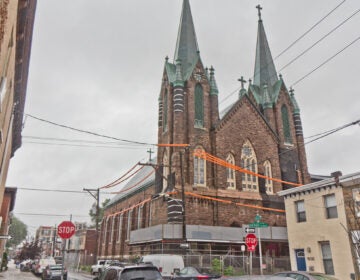
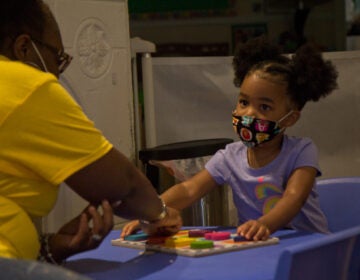
![CoronavirusPandemic_1024x512[1]](https://whyy.org/wp-content/uploads/2020/03/CoronavirusPandemic_1024x5121-300x150.jpg)
